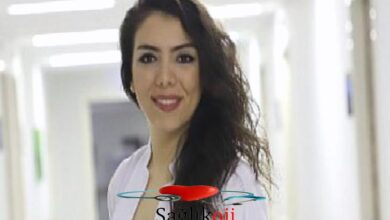Down syndrome is not contrindication for surgical treatment of complex cardiac anomalies: two case report
Introduction Down Syndrome is characterized with the 21st chromosome being 3 units. The phenotype of Down’s Syndrome consists of intellectual impairment, short stature, heart diseases, digestive disorders, and orthopedic anomalies associated with abnormal physical and neurological findings [1]. The most common congenital heart diseases in individuals with Down syndrome are atrioventricular septal defects and conotruncal defects. On the other hand, 59-72% of all atrioventricular septal defect cases are Down syndrome cases. Fallot Tetralogy (TOF) anomalies are common in Down syndrome [2). 50% of Down syndrome births can be associated with primum ASD, 65-70% with secundum ASD, and 40-50% with sinus venosus defect [3]. The leading cause of mortality in the first two years of life in Down syndrome cases is cardiac malformations [1]. Conditions with the highest mortality rate in Down Syndrome are those associated with tetralogy of Fallot [4]. The aim of this study is to raise awareness of the importance of early diagnosis and treatment of the congenital heart diseases that affect morbidity and mortality in Down Syndrome. We would like to emphasize the importance of performing surgical therapy in the presence of complex anomalies accompanying Down syndrome. Case Report 1 A 24-year-old male patient referred to cardiology polyclinic with complaints of palpitation and dyspnea. The physical examination revealed that the mildly obese patient had Down Syndrome. There was a 2/6 systolic murmur at the pulmonary area. ECG showed olağan sinüs rhythim. Cardiomegaly was present on the telecardiography. Echocardiographic examination revealed a sequential type defect with a diameter of 2.3 cm and left to right shunt in the interatrial septum. The QP / QS ratio was measured as 4.1. The patient was recommended for operation for large secundum ASD diagnosis. After describing the risks to the patient’s family, patient was taken to the operation with standart open heart surgery techniques (normothermic cardiopulmonary bypass with mebrane oxygenator). Large secundum ASD was closed with pericardial patch. The patient who had a postoperative period without any problems. He was discharged on the 5th postoperative day. The patient, had surgery 5 years ago, is currently at FC1 according to the New York Heart Association (NYHA) functional capacity classification. Echocardiographic controls showed intact interatrial septum. Case Report 2 A 19-year-old woman, known to be Down’s syndrome, was referred to the cardiology polyclinic for further examination and treatment. She had shortness of breath, complaints of ciyanosis on her lips and quick fatigue after effort. In the story taken from her family, when she cries, her lips turn purplish. She developed growth retardation comparing to her siblings. She could not run like her friends. She wanted to squat after slight effort. Medicine Science International Medical Journal *Coresponding Author: Begumhan Turhan, Hasan Kalyoncu University, Department of Health Sciences, Gaziantep, Turkey E-mail: [email protected] doi: 10.5455/medscience.2016.05.8568 Med Science 201.;.(.):… 2 Perioral cyanosis, clubbing on the fingers andsystolic murmur of 3/6 degrees along the left side of the sternum was found at the physical examination of the patient. ECG had sinus rhythm, right ventricular hypertrophy. Echocardiographic examination revealed that dilated right artium and ventricule, intact interatrial septum, a 1.5 cm diameter VSD in the subaortic region, shunt from left to right and right sided deviation of the aorta. Hypertrophy on the right ventricular outflow tract and valvuler and subvalvular pulmonary stenosis were found. There was 80 mm Hg gradient across the pulmonary valve. The patient was diagnosed as fallot tetralogy. The operation was suggested. All the risks of the operation was discussed with the family. After the necessary preparations, the patient was taken to the operation room. Total Correction Surgery (closing of the VSD and removing the pulmonary stenosis) was performed (mild hipothermic cardiopulmonary byass with membrane oxygenator).Postoperative follow-up period was uneventful. The patient was discharged on the 8th day with necessary suggestions. At the postoperative 4.th year the patient is in NYHA FC I, interventricular septum intact at echo examinations and 20 mmHg gradient was detected on pulmonary valve. The medical follow-up and treatment of the patient continues. Discussion It is known that about half of individuals with Down’s syndrome have congenital heart disease requiring surgical repair. The holistic treatment approach of these individuals focuses on the management of physical, physiological and cognitive functions. In cases where surgical repair is required, it is unlikely that physiological functions will be adequate without treatment. Inadequate physiological functions may lead to the failure to obtain the desired efficiency in physical and cognitive functions. This is an important situation that should be aware of the professionals and families living in the rehabilitation process with a patient with down syndrome. Studies have shown that the risks involved in surgical approaches to the treatment of congenital heart diseases in the Down’s syndrome population are not different from the risks encountered in the surgery of patients without Down’s syndrome [4]. Along with improvements in cardiovascular surgery, survival rates after surgery are increasing steadily due to early surgery, improvements in myocardial protection methods, and better postoperative deva [5]. Today’s accepted information is the families should be encouraged as much early surgical treatment as possible by the surgical team. Late-acting surgeryis likely to cause further impairment of valve function and development of residual pulmonary hypertension. Findings from a study of adult Down syndrome who had surgery in an experienced center suggest that Down syndrome may have heart surgery with a very low mortality and morbidity risk [6]. We think that the duration of hospitalization in our cases with short duration like 5 and 8 days is a significant factor to reduce the mortality when considering the postoperative complications due to long hospital stay. Early diagnosis and early surgery in the treatment of congenital heart diseases in individuals with Down syndrome is important for the prognosis of the disease. It is inevitable that individuals with Down Syndrome suffer from a significant decrease in their functional capacities and a negative impact without surgery. Their quality of life becomes worse if they are not operated on the basis of a life threatening risk of heart surgery [7].However, as seen in both of our cases, surgical treatment was delayed considerably. Families should be informed about the success of surgical treatments for cardiac problems in Down Syndrome. As a result, solutions are possible, no matter how complex the problems are. In order to inform and direct this issue, we have great responsibilitybecoming the health professionals against to the families of individuals with Down Syndrome. References 1. Kuzucu, A, Vidinlisan S, Kibar AE, Ekici F, Alpan N, Çakır HT Down Sendromunda konjenital kalp sağlıksızlığı sıklığının ve ekokardiyografik bulguların kıymetlendirilmesi. Gen Tıp Derg. 2008;18(3):105-10. 2. Barlow GM1, Chen XN, Shi ZY, Lyons GE, Kurnit DM, Celle L, Spinner NB, Zackai E, Pettenati MJ, Van Riper AJ, Vekemans MJ, Mjaatvedt CH, Korenberg JR. Down syndrome congenital heart disease: A narrowed region and a candidate yine. Genet Med. 2001;3:(2)91-101. 3. Geva T, Martins JD, Wald RM Atrial septal defects. Lancet 2014;383(9932):1921-32. 4. Baciewicz FA, Melvin WS, Basilius D, Davis JT. Congenital heart disease in Down’s syndrome patients: a decade of surgical experience. In: Heinemann M, Böning A, Zehmer B, eds, The Thoracic and cardiovascular surgeon. Newyork: Thieme Medical Publishers. 1989;369-71. 5. Şaşmazel A, Yıldırım A, Baysal A, Çalışkan A, Fazilet H, Buğra O ve ark. Komplet atriyoventriküler septal defektlerde modifiye tek yama ve çift yama tekniklerinin kıymetlendirilmesi ve kısa devir sonuçlarımız. Turkish J Thorac Cardiovasc Surg. 2011;19(3):317- 22. 6. Majdalany DS, Burkhart HM, Connolly HM, Abel MD, Dearani JA, Warnes CA, Schalf HV. Adults with Down Syndrome: Safety and long‐term outcome of cardiac operation. Congenit Heart Dis. 2010;5(1):38-43. 7. Öztürk Ö, Andsoy I. Özel ihtiyacı olan bir sıhhatsiz kümesi: Down Sendromlu çocuklar ve perioperatif hemşirelik yaklaşımları. Acıbadem Üniv Sıhhat Bilim Derg. 2015;6(2):79-84
<br>
steroid satın al
Notice: Trying to access array offset on value of type bool in /home/bekirsoy/saglikoji.com/wp-content/themes/jannah/framework/classes/class-tielabs-filters.php on line 340
Notice: Trying to access array offset on value of type bool in /home/bekirsoy/saglikoji.com/wp-content/themes/jannah/framework/classes/class-tielabs-filters.php on line 340
Notice: Trying to access array offset on value of type bool in /home/bekirsoy/saglikoji.com/wp-content/themes/jannah/framework/functions/media-functions.php on line 114
Notice: Trying to access array offset on value of type bool in /home/bekirsoy/saglikoji.com/wp-content/themes/jannah/framework/classes/class-tielabs-filters.php on line 340
Notice: Trying to access array offset on value of type bool in /home/bekirsoy/saglikoji.com/wp-content/themes/jannah/framework/functions/media-functions.php on line 114





